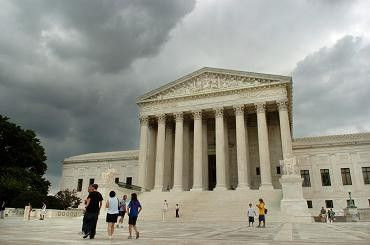Affirmative Action in Universities at Risk? Supreme Court to Weigh Race as Admissions Factor

Affirmative action in schools will be argued before the U.S. Supreme Court this October in a case that could affect university admissions process that aim to diversify the student body.
The court Tuesday decided to take a petition from Abigail Fisher, a white applicant to the University of Texas at Austin who said she was rejected because of the school's racial preference policy. She is challenging the policy on equal protection grounds.
This is the first time in nine years that the Supreme Court will hear a case on affirmative action in universities. In 2003, a landmark decision ruled that state universities can use race as one of many factors in the admissions process to ensure diversity. The ruling in Grutter v. Bollinger, however, banned outright racial quotas.
But affirmative action supporters face difficult terrain in maintaining race as an admissions factor.
The Supreme Court has changed dramatically since former Justice Sandra Day O'Connor wrote her 2003 Grutter opinion.
Conservatives Chief Justice John G. Roberts and Justice Samuel A. Alito, O'Connor's successor, are now on the court and have been hostile to race-based decisions in the education realm.
Further, Justice Elena Kagan is recusing herself from the case, presumably because of her previous role as the Obama administration's solicitor general, its chief Supreme Court attorney. The Obama administration had supported the University of Texas' admissions policy when the affirmative action case was before a lower appeals court, which sided with the school.
Gutting Grutter
The case may be a vehicle for justices opposed to affirmative action to dismantle or weaken the Grutter decision.
Before the 2003 ruling from O'Connor, the University of Texas was barred from using race as an admissions factor. The university had implemented a plan from state lawmakers to boost minority enrollment by automatically accepting any in-state student who cracked the top 10 percent in their high school.
The plan increased freshman minority students; the Hispanic and black portion of the incoming freshman class rose to 21.4 percent in 2004. Fisher's attorneys argue the top 10 percent policy had worked toward increasing minority enrollment, making the use of race unnecessary and in violation of the Grutter ruling.
Given the diversity of a state like Texas, the university felt the top 10 percent policy was insufficient and capitalized on the Grutter ruling, adding race as a factor in the competitive enrollment process for applicants who fell below the cutoff in high school. The new policy aimed to attain a critical mass of underrepresented minorities (i.e., blacks and Latinos) in the student body and classrooms.
Fisher's attorneys say if University of Texas' policy falls within the scope of Grutter, the decision should be clarified or reconsidered to restore the integrity of the Fourteenth Amendment's guarantee of equal protection.
The University of Texas, which urged the Supreme Court to leave the case alone, said Fisher's arguments do nothing to challenge the core of Grutter: State universities have a compelling interest in fostering a racially diverse student body.
It would be particularly ill-advised for the Court to reconsider Grutter, the university wrote, when Fisher has been unwilling to challenge the core premise of that decision.
© Copyright IBTimes 2025. All rights reserved.





















